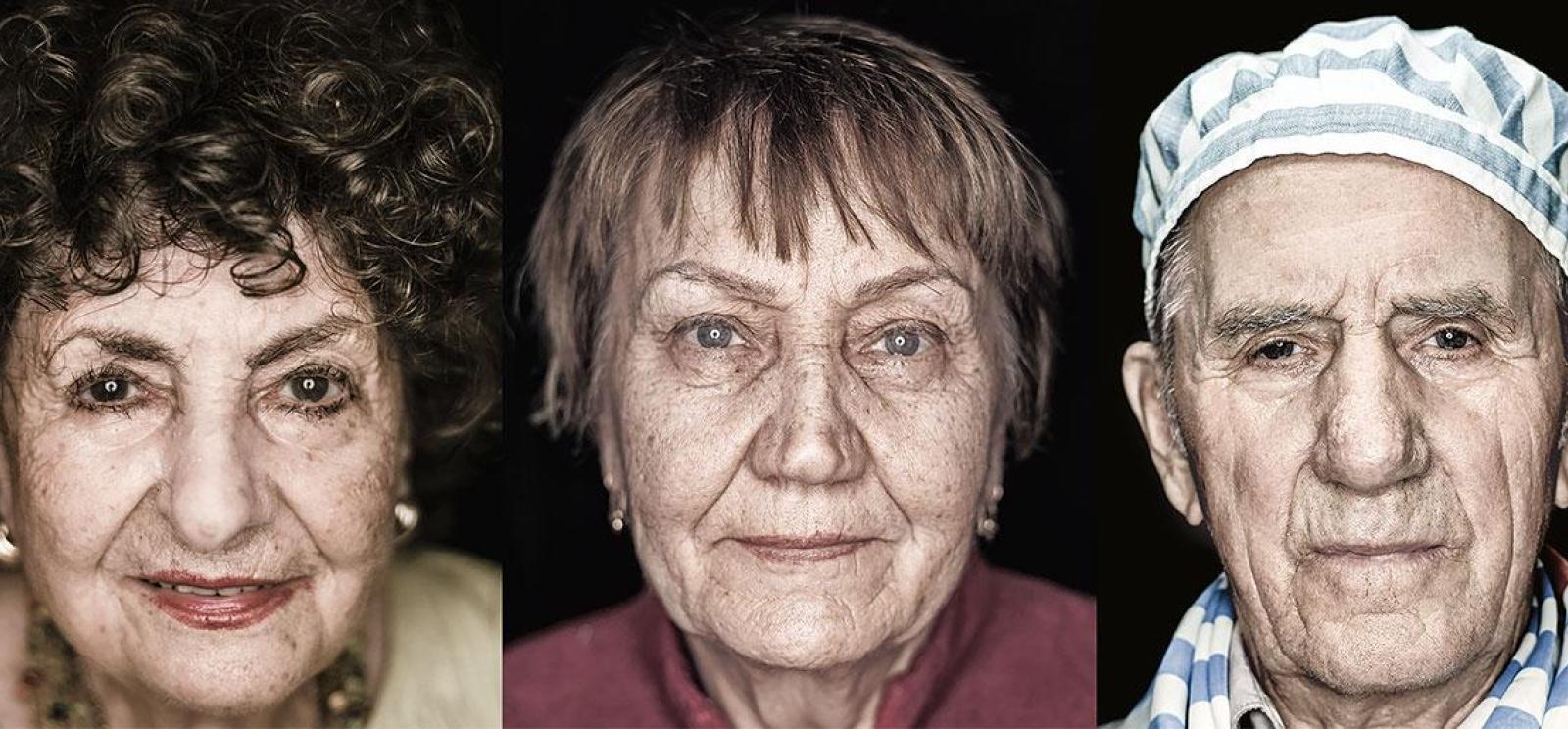
Lest We Forget
An abbreviated version of the exhibition featuring portraits of seven Holocaust survivors from Kansas City continued through Oct. 20 in front of the Museum and Memorial Main Entrance.
As part of the nationwide campaign, Wunderbar Together: Year of German-American Friendship, Goethe Pop Up Kansas City brings the international Holocaust remembrance project Lest We Forget to Kansas City.
German-Italian photographer and filmmaker Luigi Toscano visited and took portraits of almost 400 Holocaust survivors in the United States, Germany, Ukraine, Russia, Israel, Belarus, Austria and the Netherlands for Lest We Forget.
Instead of exhibiting the photographs in a museum or a gallery, Toscano presents the large-scale portraits together with small information panels in public places such as parks, squares, or on facades, so they are accessible to everyone.
The installation at the Museum and Memorial features 70 portraits of Holocaust survivors, seven of which were recently taken in Kansas City with support from the Midwest Center for Holocaust Education.
In September 2015, the inaugural display of Lest We Forget was presented in Mannheim, Germany, Toscano’s hometown, to mark the 70th anniversary of the end of World War II. The installation was later exhibited in Kiev, Ukraine, during the 75th anniversary of the massacre of Babyn Yar.
In 2018, Lest We Forget was brought to the United States. The exhibition was first shown in New York City where it was installed at the United Nations headquarters to commemorate International Holocaust Remembrance Day. In April, it was shown in Washington, D.C., where more than 120 portraits were placed along the Lincoln Memorial Reflecting Pool. Additional locations include Boston, San Francisco and Vienna, Austria.
Though it involved countries from every inhabited continent, the Great War did not inevitably lead to World War II. However, history’s first truly global war set the stage for future hostilities with empires lost, national boundaries reshaped, economies devastated and more than 29 million casualties. The experiences of devastating conflict and the resulting unstable “peace” set the stage for the rise of Nazism and disenchantment with U.S. President Woodrow Wilson’s idealistic ambitions. In turn, these developments shaped both the attitudes and the actions of the men, women and children left to rebuild amid suffering in the after effects of WWI. Find out more from the United States Holocaust Memorial Museum.
The exhibition is open to the public at any time from Sept. 20 – Oct. 6, 2019. An opening ceremony featuring dignitaries and Holocaust survivors from Kansas City is open to the public on Friday, Sept. 20 at noon in the Memorial Courtyard.







